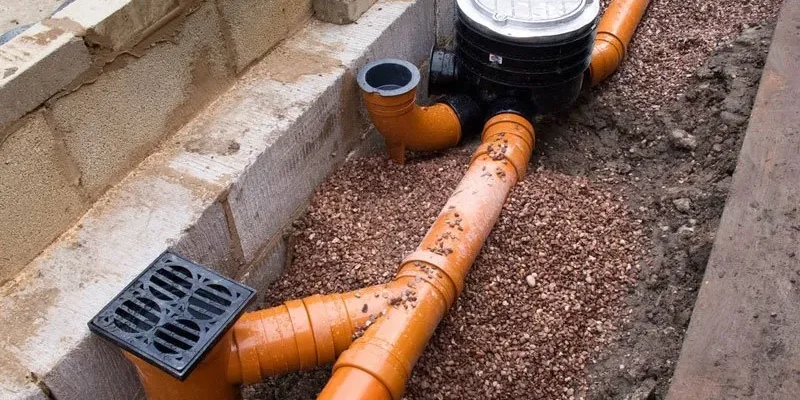
You probably don’t think much about your sewer line until something starts going wrong. A slow drain, an odd smell, or a patch of grass that suddenly looks a little too green are all small things that often point to a much bigger issue underground.
Sewer lines are built to last, but time, weather, and daily use slowly wear them down. A small crack can turn into a full break, and what starts as a small clog can lead to a full system backup. Once that happens, repairs get messy and expensive.
The good news is that most of this damage can be prevented if you know what causes it. Here’s what every homeowner should understand about sewer line damage, and how to stop it before it starts.
Tree Roots That Sneak Their Way In
If your yard has mature trees, their roots are quietly searching for moisture underground — and your sewer line is often the perfect target. Even the smallest gap or joint in the pipe can release enough moisture to attract them. Once the roots find it, they grow toward the source and slip through tiny cracks or connections.
Inside the pipe, those roots don’t stop growing. They spread, twisting and filling the space until they block the line completely. As they thicken, they can crack or even split the pipe, turning a slow drain into a full-blown sewer backup.
You’ll usually notice early signs like gurgling drains, frequent clogs, or water pooling in the yard. By the time sewage backs up, the roots have already taken over.
Prevention tip: Regular sewer line inspections are the best defense. A licensed plumber can send a camera through your line to spot small root intrusions before they cause damage. Early removal and root treatment keep the pipe clear and your yard dry.
Aging Pipes That Can’t Handle the Pressure
Every pipe has a lifespan. Materials like clay, cast iron, and Orangeburg were once common, but they weren’t built for modern water pressure, heavy use, or the ground movement that happens over decades. As these materials age, they weaken, crack, and slowly collapse under the weight of the soil above them.
In many homes, this process goes unnoticed for years. The pipe starts to sag in one section, creating a low spot where waste collects. That buildup increases pressure, which eventually forces the pipe apart. Once a small leak starts, soil and debris begin to slip in, worsening the blockage and creating even more stress on the system.
The signs usually start small, such as drains that gurgle, foul odors that come and go, or patches of grass that stay damp long after it rains. Left untreated, the damage spreads until the pipe needs a full replacement instead of a simple sewer repair.
Prevention tip: If your home was built before the 1980s, schedule a sewer line inspection. A professional plumber can use a camera to check for corrosion, cracks, or misaligned joints and recommend repairs before the pipe gives out completely.
Shifting Ground and Soil Movement
The soil around your home never truly stays still. Heavy rain, drought, and freezing weather all make the ground expand and contract. Over time, that movement pushes against your sewer pipes. Even a small shift can throw the line out of alignment, causing joints to separate or sections of the pipe to sag.
When that happens, wastewater stops flowing smoothly. It starts to collect in the low spots, creating pressure that leads to cracks and leaks. Once water begins escaping, the surrounding soil softens, which makes the pipe shift even more. It’s a slow, repeating cycle that eventually leads to serious damage.
You might notice patches of uneven ground, small sinkholes, or even puddles that don’t seem to dry up. Indoors, that same problem can show up as frequent clogs or strange bubbling noises from your drains.
Prevention tip: Keep an eye on drainage around your property and make sure gutters and downspouts carry water away from the house. If you live in an area with shifting soil or freeze-thaw cycles, schedule a sewer inspection every couple of years. A plumber can spot small separations or dips in the line before they turn into a full sewer repair job.
Every Day Buildup That Slowly Wears Your Line Down
Not every sewer problem comes from the outside. A lot of the damage starts inside the pipes, from what gets washed down our drains every day. Grease, food scraps, soap residue, wipes, and even detergents leave behind film and debris that cling to the walls of the pipe.
At first, it’s a thin layer, but over time it hardens. The opening in the pipe gets smaller, water slows down, and pressure builds each time you flush or run the sink. That pressure eventually finds the weakest point, a joint, a crack, or a corroded spot, and forces it wider. That’s when leaks, backups, and breaks begin.
You’ll usually notice slower drains or that sour smell from the kitchen sink long before it gets serious. Those are the early warnings your system is trying to give you.
Prevention tip: Be careful what goes down the drain. Avoid dumping grease or food scraps, and don’t rely on store-bought cleaners; they eat away at the pipe itself. Instead, schedule routine sewer services with a professional plumber. A proper cleaning removes buildup safely, keeps water flowing freely, and saves you from a costly sewer repair later on.
Poor Installation or Old Repairs That Didn’t Hold
Not every sewer line problem is caused by age or weather. Sometimes the issue starts the day the line was put in. If the original installer didn’t set the right slope, seal the joints tightly, or support the pipe correctly, the line can start shifting and leaking years later. The same thing happens when a patch job is done quickly without proper materials or equipment.
When a sewer line isn’t aligned properly, wastewater slows down inside the pipe. It begins to settle in the low spots, and that buildup adds pressure that pushes the joints apart. Over time, the pipe weakens, cracks, and eventually breaks down completely.
You might not see the problem from above ground, but you’ll feel it around the house — slow drains that never stay clear, toilets that gurgle after flushing, or wet areas in the yard even when it hasn’t rained.
Prevention tip: Always hire a licensed plumber for sewer line repair or installation. A professional makes sure the slope, seals, and support are correct from the start. If you’ve had recurring plumbing issues, a sewer inspection will reveal whether an old repair or poor setup is the reason behind them.
Don’t Wait for Sewer Line Damage to Drain Your Wallet
A damaged sewer line can cost more than you think. The repair alone can reach thousands, and that doesn’t include what comes after. Once sewage backs up, it doesn’t just stop at the pipe. Floors, drywall, and insulation soak it up, turning a plumbing problem into a full-blown restoration job. Add in cleaning costs, mold treatment, and the time you can’t use your home, and that “small issue” suddenly becomes a serious expense.
The frustrating part is that most of this damage is preventable. Regular inspections and maintenance keep your system healthy long before the leaks or cracks begin. A quick sewer line inspection from a licensed plumber can spot weak joints, small blockages, or early corrosion before they turn into a costly sewer repair.
At Anytime Plumbing, Sewer, Drain & Heating, we focus on prevention as much as repair. Our team provides full sewer services, from inspections and cleanings to long-lasting repairs, so your plumbing stays reliable and your home protected.
If you’ve noticed slow drains, soggy patches in your yard, or that familiar sewer smell, don’t wait until you’re replacing floors instead of pipes. Call Anytime Plumbing, Sewer, Drain & Heating today and keep your home safe, dry, and free from expensive surprises.







